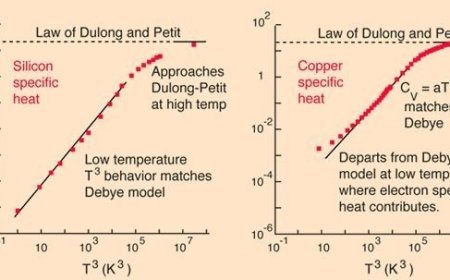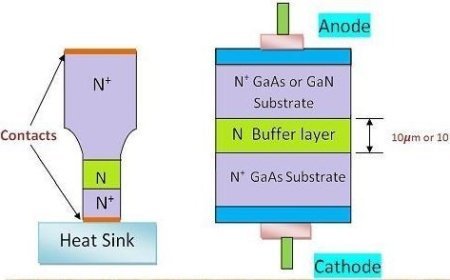Orthonormal Normalisation Technique
The Orthonormal Normalisation Technique is a fundamental method in physics and mathematics used to ensure that functions or vectors are both orthogonal (independent) and normalised (of unit length). This concept plays a crucial role in quantum mechanics, linear algebra, and signal processing, where orthonormal sets simplify complex calculations and enhance accuracy. Using the Gram-Schmidt process, any set of linearly independent vectors or functions can be converted into an orthonormal basis, making them ideal for applications in wave function normalization, coordinate systems, and Fourier analysis. Orthonormal methods provide mathematical consistency, simplify computations, and form the backbone of numerous physical theories and analytical techniques.
Orthonormal Normalisation Technique
The Orthonormal Normalisation Technique is a method used in physics to ensure that certain functions or vectors have specific properties. The term "orthonormal" means that the functions or vectors are both:
- Orthogonal (they do not affect each other)
- Normalised (they have a length of one)
- Normalisation is an important concept in many areas of physics, especially in quantum mechanics and statistical physics.
- One notable normalisation method is the orthonormal technique.
1. Normalisation
Normalisation is a mathematical method used to adjust values recorded on different scales to a notionally shared scale. In physics, it is often used to ensure that quantities like wave functions or probability distributions meet specific physical requirements.
Significance
- Consistency: Ensures that results are uniform and comparable.
- Probability Interpretation: In quantum physics, normalisation helps us understand wave functions as probabilities.
2. Orthonormality
The term "orthonormal" combines two key ideas:
- Orthogonality: Two functions or vectors are orthogonal if their inner product equals zero, meaning they are perpendicular in vector space.
- Normalisation: A function or vector is normal if its length (norm) equals one.
Mathematical Representation
For two functions, f(x) and g(x):
- Orthogonality:
∫ f(x) g(x) dx = 0 - Normalisation:
∫ |f(x)|² dx = 1
If both conditions are met, then f(x) and g(x) are orthonormal.
3. Uses of Orthonormal Techniques
A. Quantum Mechanics
- Wave Functions:
- In a Hilbert space, a group of wave functions is orthonormal if the following conditions hold:
- The inner product of any two different wave functions is zero.
- The inner product of a wave function with itself is one.
- In a Hilbert space, a group of wave functions is orthonormal if the following conditions hold:
- Basis States:
- Special functions that help describe other states, making calculations and predictions in quantum systems easier.
B. Classical Mechanics
- Coordinate Systems:
- Using orthonormal basis vectors, such as Cartesian coordinates, simplifies the calculation of forces and motions in different directions.
C. Signal Processing
- Fourier Analysis:
- Fourier Series use sine and cosine functions, which are often orthonormal.
- This helps in efficiently representing and processing data.
4. Constructing Orthonormal Sets
The Gram-Schmidt process is a method used in linear algebra to transform a set of vectors into a set of orthogonal (perpendicular) vectors.
Steps of the Gram-Schmidt Process
- Start with a Set: Begin with a set of linearly independent vectors.
- Select the First Vector: Keep the first vector as it is.
- Make the Second Vector Orthogonal:
- Subtract from the second vector its projection onto the first vector.
- Continue with Additional Vectors:
- For each new vector, subtract projections onto all previously selected orthogonal vectors.
- Normalize: Scale each vector to ensure it has a unit length.
By the end, you will have a new orthonormal set of vectors, making calculations easier.
Building an Orthonormal Set from Functions or Vectors
Using the Gram-Schmidt process, you can build an orthonormal set from a given group of functions or vectors.
Example:
Let’s say we have two functions, f₁(x) and f₂(x).
- Orthogonalise:
- Start with g₁ = f₁.
- Compute:
g₂ = f₂ - ( ⟨ f₂, f₁ ⟩ / ⟨ f₁, f₁ ⟩ ) × f₁
- Normalise:
- Normalize g₁ and g₂ to obtain e₁ and e₂, such that:
⟨ e₁, e₁ ⟩ = 1, ⟨ e₂, e₂ ⟩ = 1
- Normalize g₁ and g₂ to obtain e₁ and e₂, such that:
5. Advantages of Using Orthonormal Methods
A. Simplifies Calculations
- Using orthonormal functions makes calculations easier in both theory and practical applications.
B. Helps Solve Complex Problems
- Problems become easier to understand when they are broken into smaller parts using an orthonormal basis.
C. Enhances Understanding
- These methods help visualize complex relationships in both quantum and classical systems, improving our understanding of physical phenomena.
What's Your Reaction?
























